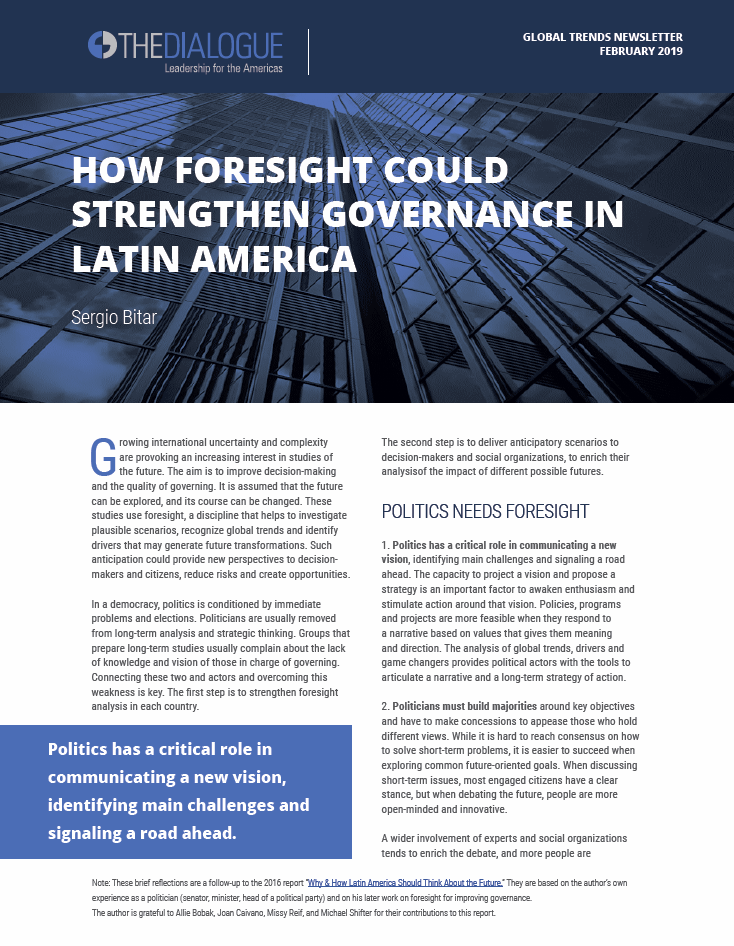Latin America & the US: Looking Towards 2020
The ongoing and unprecedented speed of global change demands a new responsibility from Latin American countries.
The Dialogue’s long-term global trends program aims to increase Latin America’s exposure to the growing use of foresight and strategic thinking, in order to improve decision-making today. In cooperation with the Inter-American Development Bank, the Dialogue’s initiative provides governments, banks and corporations, universities, think tanks, and other institutions in Latin America fresh, continued access to vital information and analyses on relevant trends and future scenarios, with the goal to strengthen the region’s own capacity to conduct and disseminate similar studies.
This newsletter from the Global Trends Project seeks to identify how foresight could strengthen governance in Latin America.
Foresight analysis also helps to identify strategic areas for building a better future. Four goals are worth mentioning:
The ongoing and unprecedented speed of global change demands a new responsibility from Latin American countries.
The future of Latin America will be directly affected by its responses to changing global trends today.
The second newsletter of the Dialogue’s Global Trends and Latin America’s Future Initiative identifies key challenges and opportunities for Latin America and discusses the relationship between global trends and education policy.

 Video
Video
